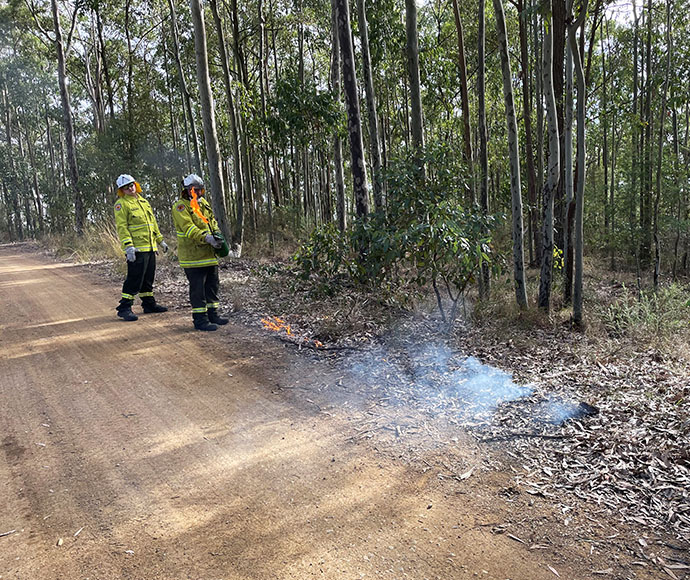Hazard reduction burn in Stockrington State Conservation Area
The NSW National Parks and Wildlife Service (NPWS) will undertake a 2-day hazard reduction burn in Stockrington State Conservation Area (SCA) starting Tuesday 29 August, weather permitting.
The 40-hectare burn will promote biodiversity while reducing bushfire risk.
The burn encourages biodiversity by prompting regrowth and germination of key native plant species, and reduces bushfire risk to nearby Seahampton village, wildlife and cultural heritage.
With the support of the NSW Rural Fire Service and Transport NSW, NPWS will take advantage of a small window of opportunity to conduct this burn following a number of wet years.
Anyone driving in the area, particularly along the M1, Hunter Expressway and George Booth Drive near Seahampton village, is advised to drive to conditions and respect any temporary traffic control measures that may be in place.
To ensure public safety, the burn area north of Seahampton village in Stockrington SCA will remain closed for a number of days from Tuesday. It will reopen once the area has been assessed as safe and any tree hazards managed.
People vulnerable to smoke are encouraged to stay indoors and keep doors and windows closed to reduce exposure.
Regular monitoring of weather and fire-ground conditions enables NPWS to adjust planning leading up to and immediately prior to commencement of every hazard reduction burn.
Hazard reduction burns are essential to reduce bushfire fuel loads to help protect parks, neighbours and communities from future bushfires.
This burn is one of many hazard reduction operations undertaken by NPWS each year, many with assistance from the Rural Fire Service and Fire and Rescue NSW.
All burns around the state are coordinated with the NSW Rural Fire Service to ensure the impact on the community is assessed at a regional level.
People with known health conditions can sign up to receive air quality reports, forecasts and alerts via email or SMS from the Department of Planning and Environment.
For health information relating to smoke from bush fires and hazard reduction burning, visit the NSW Health website or Asthma Australia.
More information on hazard reduction activities is available at NSW Rural Fire Service and the NSW Government Hazards Near Me website and app.
